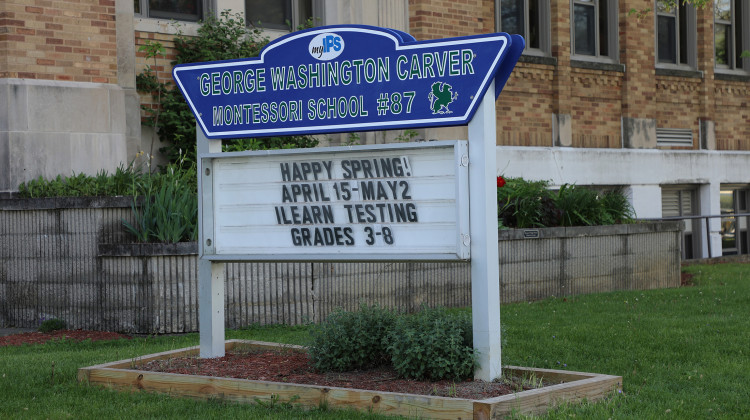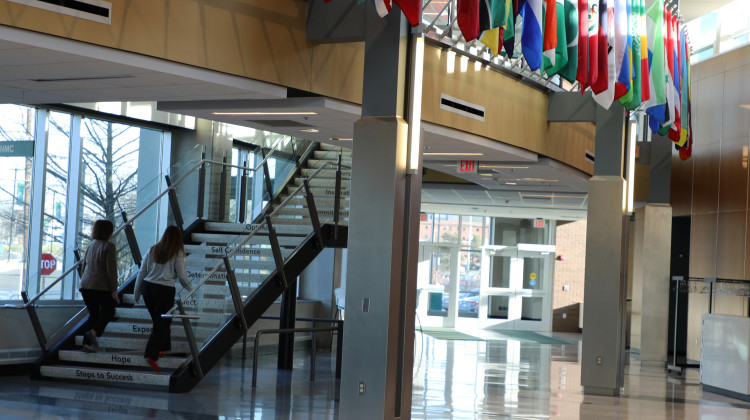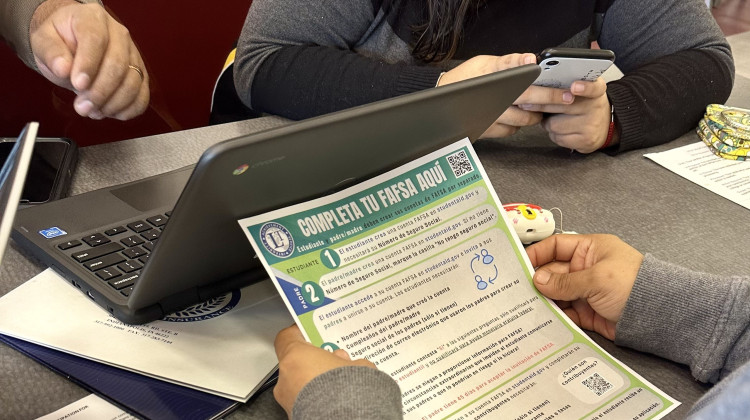A recent survey from the Annie E. Casey Foundation indicates nearly a third of Indiana high schoolers are also employed.
The annual Kids Count report says students who have a job during their high school years are less likely to drop out, and those who participate in programs that give them work experience are more likely to go to college.
Teacher Pat Greenan calls the Interdisciplinary Cooperative Education program, which provides high school seniors work experience as part of their school day, “the best kept secret at Harrison High School.”
The students attend classes in the morning, then spend their afternoon at a job.
Greenan says unlike the vocational education of old, which mainly involved boys working in automotive jobs, ICE includes girls, too, and covers a variety of disciplines.
“Four students this year are working for the USDA," she said. "I have a student who is working in the Department of Education at Purdue. I have another student who is working in Pappy’s Sweet Shop in the Purdue Union. I have a student at SIA. There are always students who are working in the retail area.”
Greenan says the program includes a classroom component which covers information students should know to help them get a job and be a good employee.
“So we cover resumes, cover letters, we do a career research report," she said. "Second semester are usually the money issues. Right now it’s taxes, and we do budgeting, we’ll talk about insurance, we’ll talk about credit cards and savings accounts.”
Greenan says the program draws all kinds of kids — from Honors students to those who struggle academically. She says the only students it doesn’t work for are those who think it’s just a way to get out of school early.
But Greenan says for the most part, the students who enroll in ICE take it seriously and get a lot out of it.
Kayla Jacobshagen is a 17-year-old senior at Harrison High School who participates in the school’s Health Science Education program, which gives students the skills necessary to pass the state exam to become a licensed Certified Nursing Assistant.
The skills she learned there helped her get a part-time job at an assisted living facility in Lafayette. She now works there between 16 and 32 hours each week.
Participants in the Health Science Education program earn credits through Ivy Tech Community College for the prerequisite courses required by most nursing programs.
Jacobshagen and her classmates go to school in the morning and work at Westminster Village, a West Lafayette assisted living facility, in the afternoon.
“We work on transfers and taking care of people," Jacobshagen said. "Not what nurses do completely, but we do the things like taking them to the bathroom or helping them bathe, taking them to the dining hall and assisting them to feed. Things like that.”
But Jacobshagen says she’s had to make some sacrifices, including not being a cheerleader her senior year.
“I miss out on having lunch with my friends at school. I miss out on pep rallies and pep sessions and the afternoon announcements," she said. "It’s all the little things that I realized how much I enjoyed during my other three years in high school that I’ve been sad I’ve missed out on this year.”
Still, Jacobshagen says she’s been able to keep up with her studies despite the demands of her part-time job.
That’s not the case for all teens who work.
The Kids Count Survey indicates students who work more than 20 hours a week may have lower grade point averages and are more likely to drop out of school than those who work fewer hours —making working and going to school a delicate balance.
 DONATE
DONATE





 View More Programs
View More Programs


 Support WFYI. We can't do it without you.
Support WFYI. We can't do it without you.